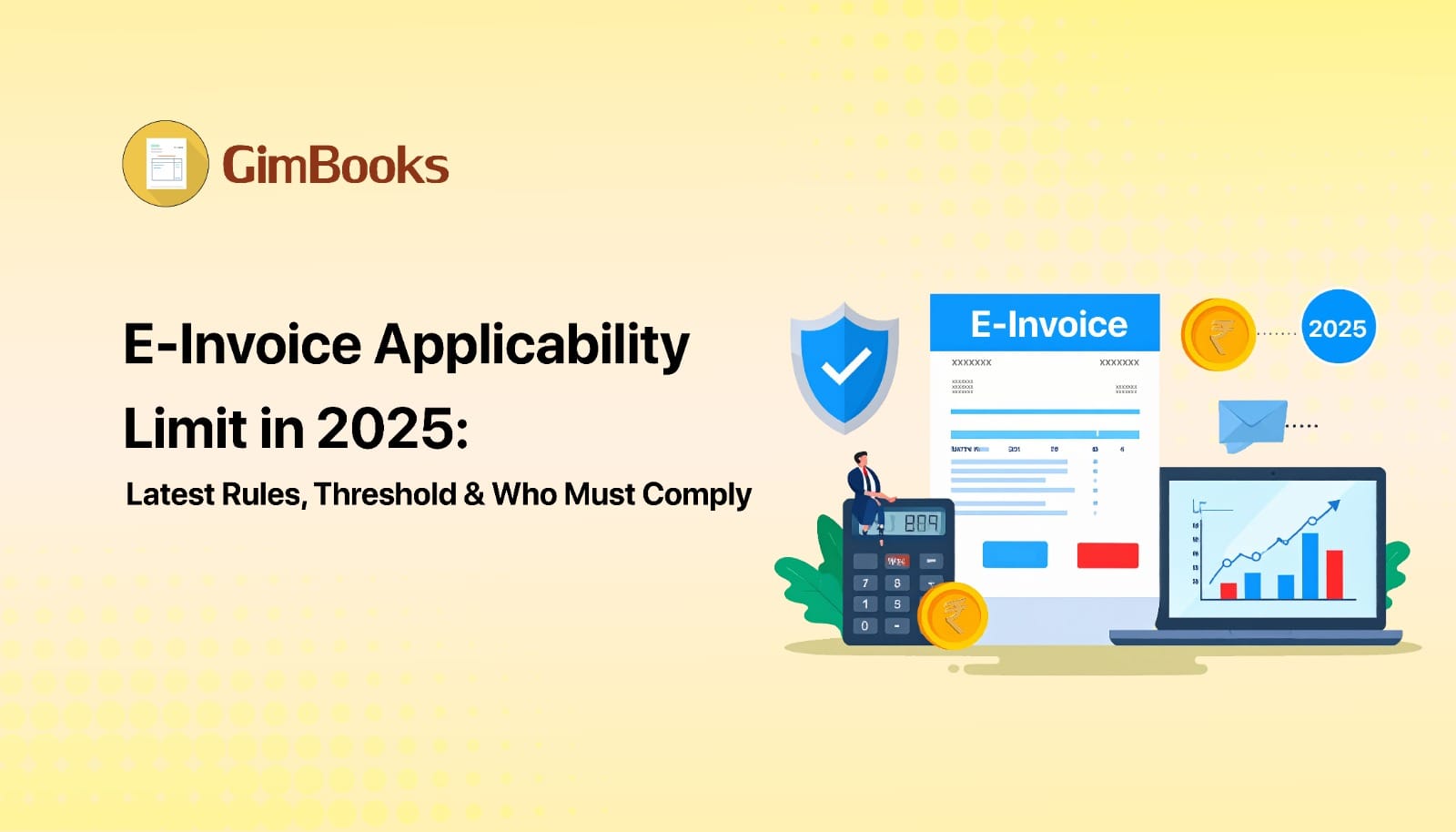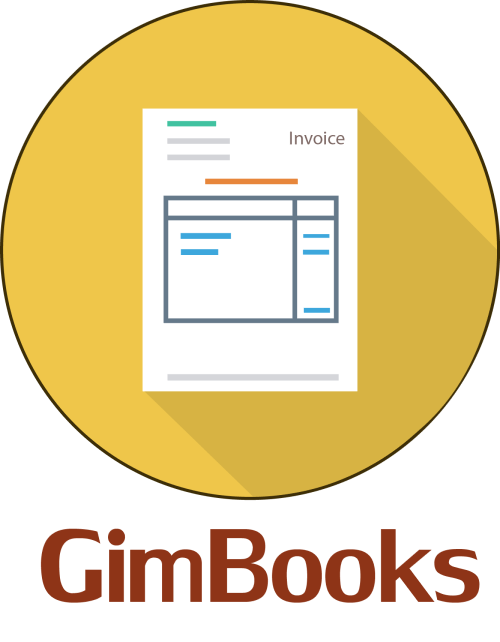E-Invoice Applicability Limit in 2025: Latest Rules, Threshold & Who Must Comply
See if your business is required to issue e-invoices under GST in 2025. Understand the ₹5 crore limit, rules, and penalties.

Getting the hang of e-invoicing is becoming a must for small businesses in India. In 2025, it's more important than ever for these businesses to know the latest rules, what the new e-invoice applicability limits and thresholds are, and who needs to follow them. This isn't just about following the law; it's about making your invoicing work better.
What Exactly Is E-Invoicing?
So let’s break this down step by step. What is e-invoicing? How does the turnover threshold work? Who is exempt? And most importantly, how do you stay compliant without disrupting your business?
Understanding E-Invoicing
A lot of business owners hear “e-invoicing” and think that it means creating invoices on the GST portal. That’s not correct.
E-invoicing simply means that every invoice you generate through your own billing or accounting software must be reported to the Invoice Registration Portal (IRP). Once reported, the invoice gets a unique Invoice Reference Number (IRN) and a QR code.
That IRN makes the invoice valid under the GST law. Without it, the invoice is treated as invalid, no matter how professional or correct it looks.
The E-Invoice Applicability Limit in 2025
The government has been lowering the GST e-invoicing threshold gradually. In 2025, the limit is ₹5 crore.
That means if your aggregate turnover in any financial year since 2017-18 is ₹5 crore or more, you need to issue e-invoices for B2B transactions, exports, and certain government supplies.
How the E-invoicing Turnover Limit Changed Over Time
- October 2020: Started at ₹500+ crore
- January 2021: Reduced to ₹100 crore
- April 2022: Reduced to ₹20 crore
- October 2022: Reduced to ₹10 crore
- August 2023: Reduced to ₹5 crore (still applicable in 2025)
So, if you crossed ₹5 crore turnover at any point after 2017-18, the e-invoice mandatory limit applies to you now.
Who Must Comply With GST E-Invoicing Rules in 2025
You must issue e-invoices if:
- Your turnover crossed ₹5 crore in any financial year from 2017–18 onwards
- You make B2B sales (to other registered businesses)
- You export goods or services
- You supply to government departments (B2G transactions)
Note on “aggregate turnover”: It means the total value of sales—including exports and exempt sales—across all GSTINs under your PAN.
Who is Exempt From E-Invoicing
Not everyone with a turnover above ₹5 crore is required to comply. The following businesses are exempt from e-invoicing:
Banks, NBFCs, and insurance companies
- SEZ units (but not developers)
- Goods transport agencies (GTA)
- Passenger transport services
- Cinema ticket sellers
So even if these businesses cross the e-invoice turnover limit, they don’t need to issue e-invoices.
Why Does the Government Want E-Invoicing?
The idea is simple: make GST compliance smoother, reduce fake invoicing, and create a real-time flow of data into the GST system.
Here’s How The E-invoicing Limit Can Help You:
- Input Tax Credit (ITC) claim becomes easier as the buyers can claim ITC without disputes.
- GST return filing gets easier since data is already shared with the GST system.
- Reduced fraud as the fake invoices are harder to generate.
How to Check If You Are E-invoicing Compliant
Many businesses are unsure whether they’re required to issue e-invoices. Use this simple check:
-
Add up your total turnover (taxable, exempt, exports—everything).
-
Include turnover from all branches/GSTINs under your PAN.
-
See if it crossed ₹5 crore in any financial year since 2017–18.
If your turnover has crossed ₹5 crore in any year since 2017–18, you must comply with the GST e-invoice rules (e-invoicing limit applicable in 2025).
What Happens If You Ignore the E-Invoice Rules?
This is where the rules get strict. If you don’t generate an e-invoice when required, the following issues affect your business:
- Your invoice becomes invalid under the GST law
- Your customer can’t claim ITC
- You may face penalties up to ₹25,000 per invoice
- Your reputation with clients may take a hit
So, ignoring the e-invoice applicability limit is not really an option.
How to Get Started With E-Invoicing
If you’ve confirmed you’re required to comply, here’s what to do next:
Update your billing software – It should support e-invoice generation and IRP integration.
- Register on the Invoice Registration Portal (IRP)—usually handled by your software provider.
- Train your team—they need to know how to generate and validate invoices.
- Test the system—run trial invoices before going live.
With GimBooks, e-invoicing is easy!
All you need to do is click on an invoice.
Then click on the e-invoice option below the invoice; that will convert the invoice to an e-invoice quickly!!
From this point, every eligible invoice will have an IRN and QR code.
Explore - Our e invoicing software
E-Invoicing for Service Providers vs Traders
Many service providers assume e-invoicing doesn’t apply to them. That’s not true.
If you’re in consulting, IT, logistics, or any service sector and your turnover is above ₹5 crore, you must issue e-invoices for your B2B clients. The GST e-invoice turnover limit applies equally to traders and service providers.
To know more, explore GimBook’s blog for small businesses!
Avoid Common e-Invoicing Mistakes by Small Businesses
-Believing the e-invoice rule applies only to the current year (it applies to any year since 2017-18)
-Skipping e-invoicing for branches with smaller turnovers (it applies to all GSTINs under your PAN)
-Issuing invoices without IRN and QR code (these are invalid)
-Forgetting to check exemption lists.
Avoiding these mistakes can save you both money and trouble.
Read more about e-invoicing.
The Bottom Line
The e-invoice applicability limit in 2025 is ₹5 crore, and if your business crosses that line, e-invoicing is no longer optional. It’s the law.
Yes, it requires some adjustment, but once you set it up, it can actually simplify your billing and reduce errors. This makes your compliance quick, easy, and free from penalties.
Explore more - E-Invoice Limit in India: Updated Guide for Businesses
FAQs on GST E-Invoicing Limit 2025
The GST e-invoice limit in 2025 is ₹5 crore. Businesses with a turnover of ₹5 crore or more in any financial year since 2017-18 must issue e-invoices.
Yes, if your business turnover is ₹5 crore or more, e-invoicing is mandatory in 2025 unless you are in an exempt category.
In 2025, e-invoicing will not apply to banks, NBFCs, insurance providers, passenger transportation services, movie ticket sellers, or SEZ units.
You can compute your total turnover across all GSTINs under your PAN for any fiscal year since 2017–18, or you can use your GSTIN to check on the GST portal.
Under GST, your invoice is deemed invalid, your clients forfeit their ITC, and you may be subject to fines of up to ₹25,000 per invoice.
